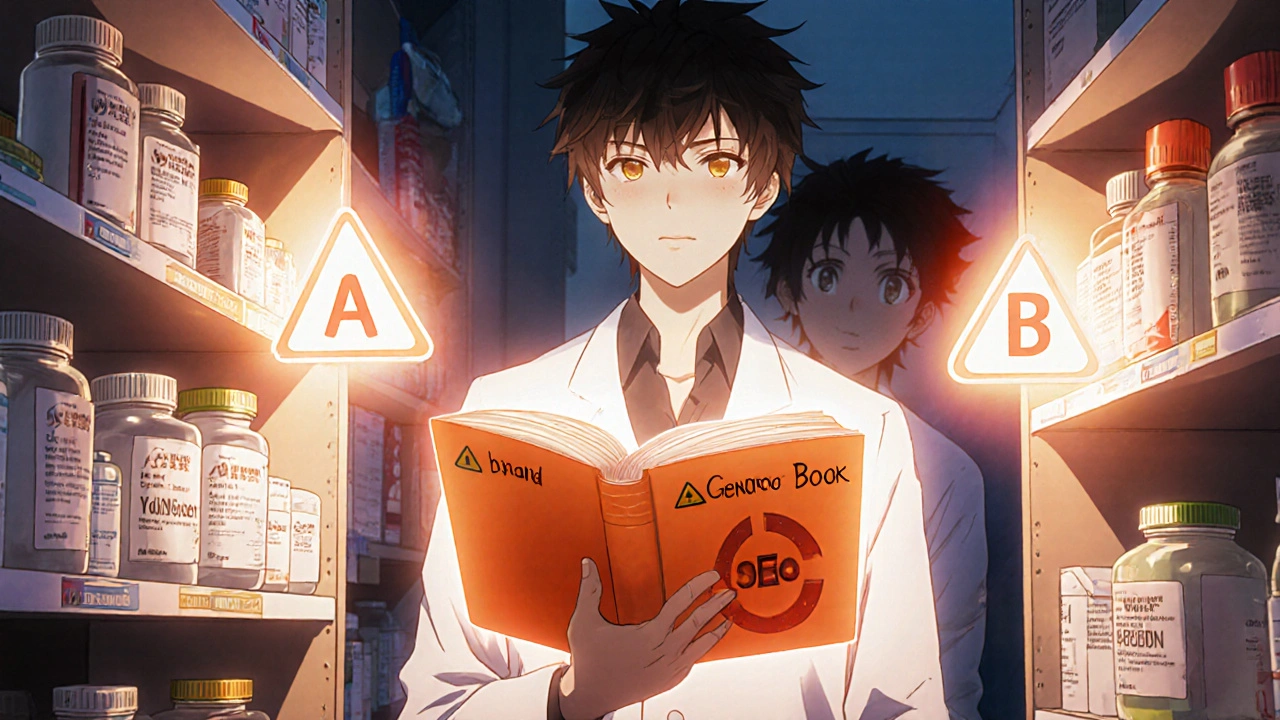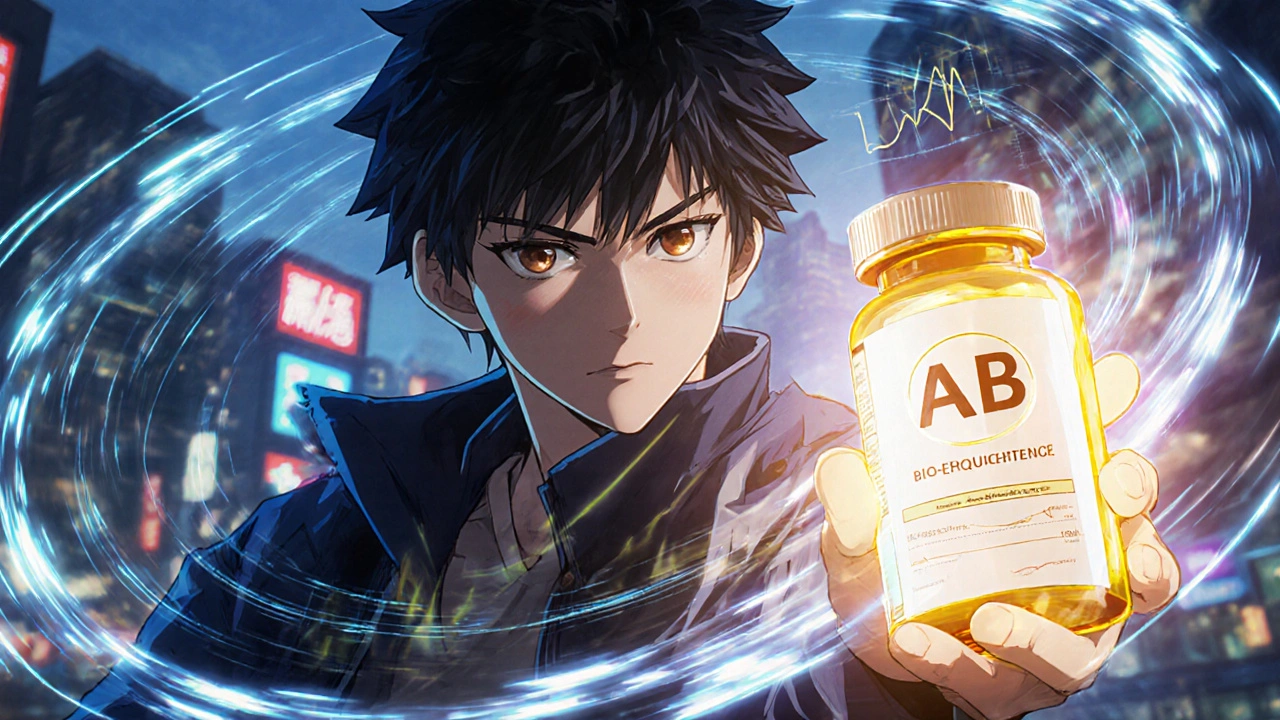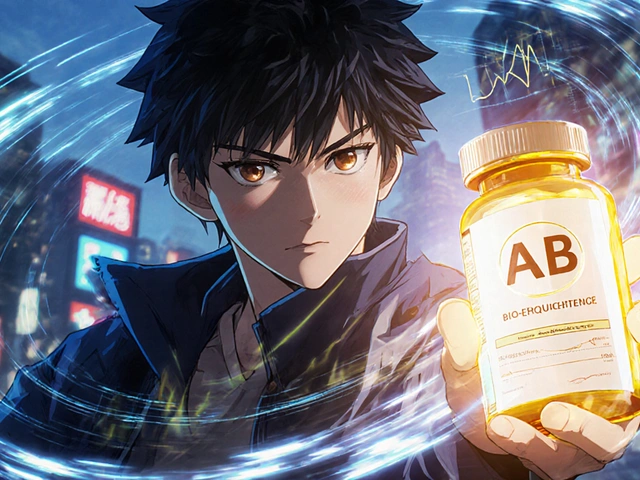When you pick up a prescription and see a different pill than what your doctor prescribed, it’s natural to wonder: Is this safe? Maybe you’ve heard stories about generics not working the same way. But here’s the truth most people don’t know: if that generic drug has an A rating in the FDA’s Orange Book, it’s not just similar-it’s scientifically proven to work exactly the same as the brand-name version.
What therapeutic equivalence actually means
Therapeutic equivalence isn’t just a fancy term. It’s a strict, science-backed guarantee that two drugs-whether brand or generic-will do the same thing in your body. The FDA doesn’t just check if they contain the same active ingredient. They make sure the drug gets into your bloodstream at the same rate, in the same amount, and produces the same clinical result. That means the same relief from pain, the same control of blood pressure, the same suppression of thyroid hormones. This isn’t guesswork. To earn therapeutic equivalence, a generic drug must pass three tests:- Pharmaceutical equivalence: Same active ingredient, same dose, same form (tablet, capsule, etc.).
- Bioequivalence: The amount of drug absorbed into your blood (AUC) and how fast it gets there (Cmax) must be within 80-125% of the brand-name drug. For most drugs, that’s a wide enough range to account for normal body differences-but not wide enough to affect safety.
- Identical clinical effect: Real-world data confirms patients don’t have different outcomes when switching.
The Orange Book: Your hidden safety net
The FDA’s Orange Book is the official list that tells pharmacists which drugs are interchangeable. It’s not publicized much, but it’s the backbone of safe generic substitution. Every drug product listed there gets a two-letter code. An AB rating means it’s therapeutically equivalent. A B rating means it’s not approved for substitution. For example, if your doctor prescribes a brand-name statin with an AB rating, your pharmacist can legally swap it for a generic with the same code. But if the generic has a B rating-maybe because it’s an extended-release version with different absorption properties-it can’t be swapped without your doctor’s approval. This system exists because some drugs are unforgiving. Take warfarin, a blood thinner. Even a 5% difference in absorption can mean the difference between a clot and a bleed. That’s why the FDA requires tighter bioequivalence standards for narrow therapeutic index drugs-90-110% instead of 80-125%. The system adapts to risk.Why generics aren’t just cheaper-they’re safer
Many people think generics are “good enough.” But that’s the wrong way to look at it. They’re not a compromise. They’re a verified copy. Between 2009 and 2019, generic drugs saved the U.S. healthcare system $1.7 trillion. That’s not just money. It’s access. It’s people who can afford their meds. It’s fewer skipped doses. It’s fewer hospitalizations from untreated conditions. A 2022 survey of 12,500 patients by UnitedHealthcare found that 87% reported no difference in how they felt after switching to a therapeutically equivalent generic. Only 3.2% blamed the switch for any side effects. And when researchers dug into the complaints, most turned out to be unrelated-like anxiety, changes in pill shape, or switching to a non-equivalent product. The Institute for Safe Medication Practices reviewed 127 adverse event reports tied to generic substitution between 2018 and 2022. Only 17 involved products with an AB rating. The rest? Products with B ratings, misidentified drugs, or patients confused about therapeutic interchange.
Therapeutic equivalence vs. therapeutic interchange: Don’t mix them up
This is where things get dangerous-and why so many people get confused. Therapeutic equivalence means swapping one drug for another that’s chemically identical and proven to act the same way. Therapeutic interchange means swapping one drug for another that treats the same condition-but is a different chemical. Like switching from lisinopril to losartan for high blood pressure. They’re both ACE inhibitors or ARBs, but they’re not the same molecule. A 2019 study in JAMA Internal Medicine found patients who got therapeutic interchanges had 32% more adverse events than those who got therapeutically equivalent generics. Why? Because even drugs in the same class can have different side effects, interactions, or dosing needs. Pharmacists are trained to know the difference. But if your doctor writes “dispense as written” or doesn’t check the Orange Book, you might end up with a drug that’s not interchangeable-and you won’t know it.Where the system still has gaps
Therapeutic equivalence works brilliantly for pills and capsules. But it gets messy with complex products. Inhalers, topical creams, eye drops, and some injectables don’t always behave the same way when copied. The active ingredient might be identical, but how it’s delivered-particle size, propellant, emulsion-can change how much reaches your lungs or skin. The FDA admits this. That’s why they’re investing $65 million through 2027 to improve testing for these drugs. And then there’s biosimilars. These are copies of biologic drugs-like Humira or Enbrel. They’re not generics. They’re not even considered under therapeutic equivalence. The FDA has a separate “interchangeability” designation for them, which requires even more data. For now, if you’re on a complex drug, ask your pharmacist: “Is this an AB-rated product?” If they hesitate, or say “it’s the same thing,” push back. Not all “similar” drugs are safe to swap.
What you can do to stay safe
You don’t need to be a pharmacist to protect yourself. Here’s what actually works:- Check your prescription label. If it says “generic,” ask if it’s AB-rated. You can look up the drug in the FDA’s Orange Book online.
- Don’t assume all generics are equal. Two different generic versions of the same drug can have different ratings. One might be AB, another might be B.
- Know your drug class. If you’re on warfarin, levothyroxine, phenytoin, or cyclosporine-drugs with narrow therapeutic windows-stick with the same brand or generic unless your doctor confirms the switch is safe.
- Track how you feel. If you notice new side effects, mood changes, or symptoms returning after a switch, tell your doctor. Don’t brush it off as “just anxiety.”
- Ask for the brand if you’re unsure. You have the right to refuse a substitution. It might cost more, but your safety isn’t negotiable.
The bottom line
Therapeutic equivalence isn’t marketing. It’s science. It’s regulation. It’s a system designed to keep you safe while saving you money. The data doesn’t lie: when a drug has an AB rating, it works the same. It’s as safe. It’s as effective. The real risk isn’t in using generics. It’s in not knowing which ones are truly equivalent. That’s why understanding the Orange Book, asking questions, and staying informed isn’t just helpful-it’s essential.When you take a pill, you’re trusting that it will do what it’s supposed to. Therapeutic equivalence makes that trust possible.



Simone Wood
November 22 2025The FDA’s Orange Book is basically the pharmacy equivalent of a secret club handshake. If you don’t know the code, you’re just rolling the dice with your health. I switched to a generic lisinopril last year and woke up with my face swollen like a balloon. Turns out the generic had a B rating. No one told me. No one even asked. Now I print out the Orange Book page and hand it to the pharmacist like it’s a damn contract.
And don’t get me started on how they slap ‘generic’ on a pill and act like it’s the same as the brand. The fillers are different. The coating is different. My body notices. It’s not in my head.
Pharmacists are supposed to be the gatekeepers, but most of them just scan and ship. They don’t care if you end up in the ER because some batch of generic metoprolol didn’t absorb right. They get a bonus for pushing generics. Not for your safety.
It’s not paranoia. It’s survival.